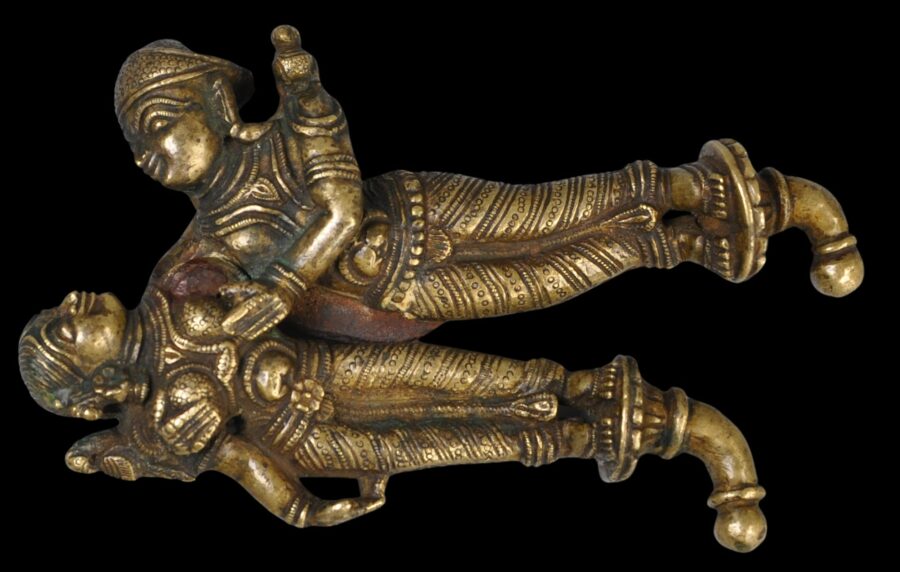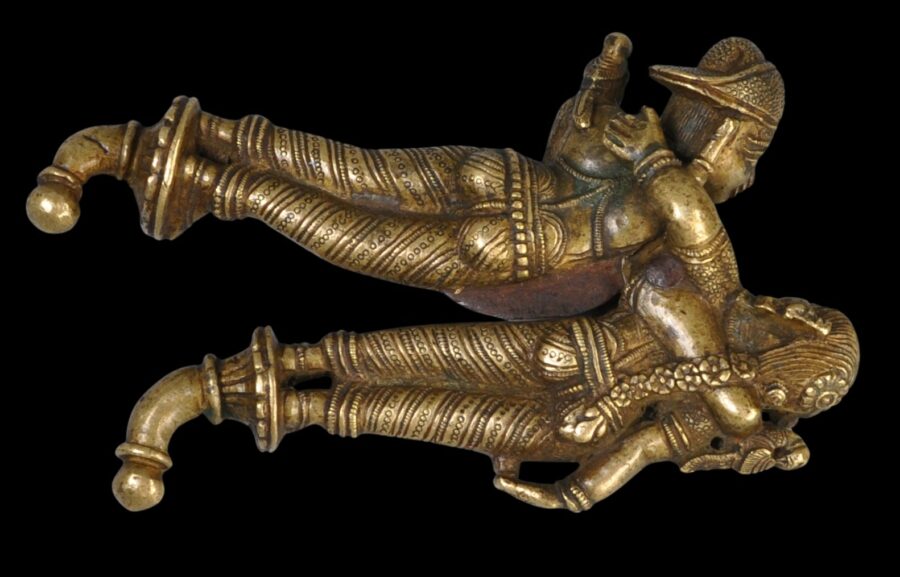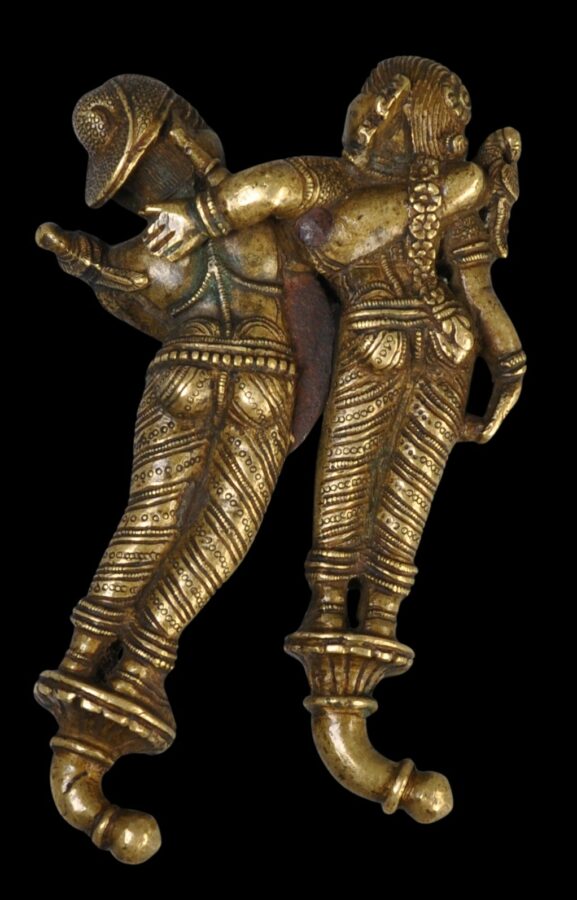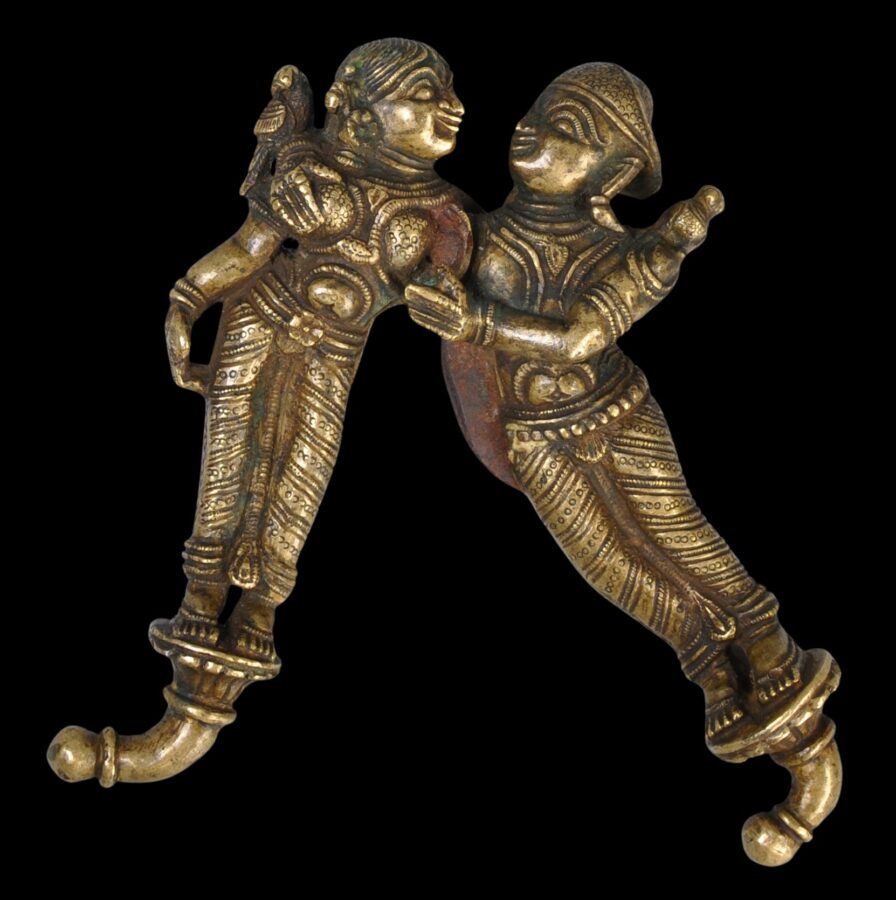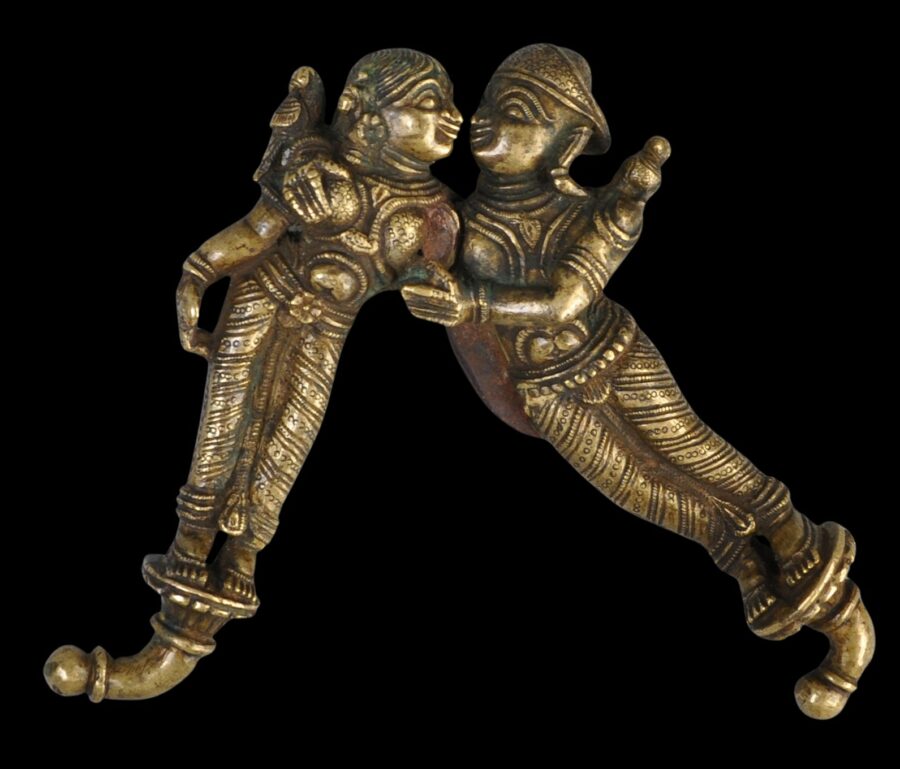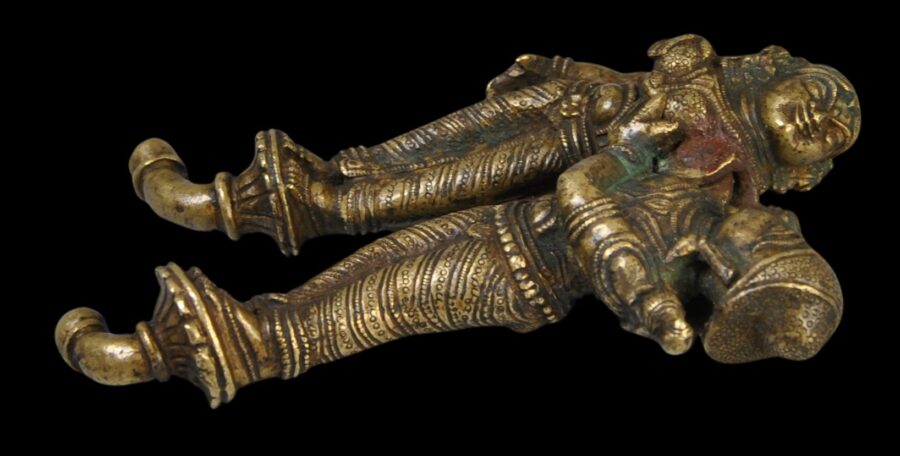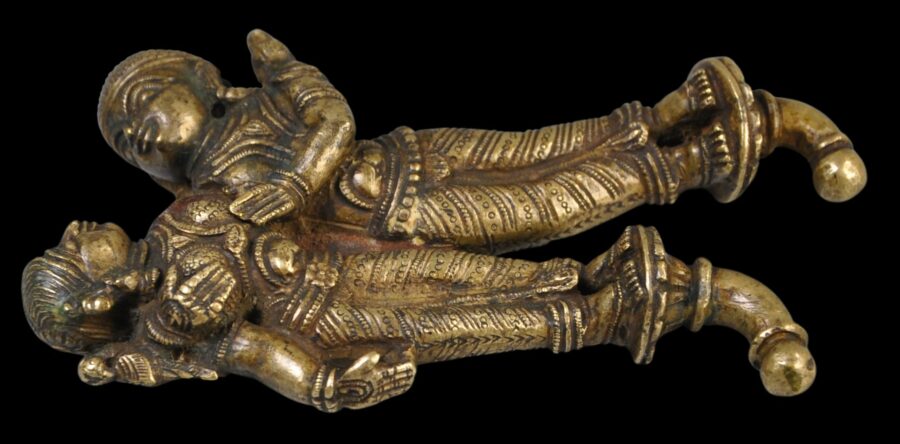Enquiry about object: 9566
Indian Cast & Chiselled Brass Erotic Maithuna Betel Cutter
West India, probably Maharashtra 18th-19th century
length: 9.7cm, width: 6.2cm, weight: 229g
Provenance
UK art market
Most betel cutters or slicers are utilitarian and perfunctory in their manufacture and decoration, but this example is particularly refined. It has been cast using the lost wax process. The casting can be seen in the tradition of the casting of Indian devotional bronzes. It comprises two lovers, each making up an arm of the cutter. The two halves are rivetted together to allow a pincer movement and there is a small iron blade between them designed to slice the areca nut used in the betel or paan quid.
The left arm of the cutter is in the form of a young, voluptuous women and the right arm comprises a young man with a turban. The woman has a parrot on her right shoulder. The man’s right hand reaches around the woman’s back and grasps her right breast. His other hand moves as the cutter opens and closes and so moves in and out to grasp her left breast. The erotic nature of the scene is matched by the phallic terminals for each arm of the cutter. In this way, the cutter can be seen to be in the Maithuna tradition – Maithuna being the Sanskrit term for sexual intercourse within Tantric practice.
Each of the figures wears a striped dhoti as well as earrings and other jewellery. The woman wears down her back a long and elegant hair plait that has been decorated beautifully with flowers.
It might seem odd for a betel cutter to be of such a suggestive form, but in India, as in many part of Southeast Asia, betel or paan is symbolic of fertility and used in wedding rites, as well as being a common, mild social stimulant routinely chewed on a daily basis.
Two related examples are illustrated in Brownrigg (1992, p. 80). Another is illustrated in Devi (1985, p. 90).
Brownrigg (1992, p. 80) attributes cutters in this style to Tamil Nadu in South India, but the figures are dressed more in Marathi-style dress from Maharashtra and so are more likely to be from that state.
The cutter is in excellent condition.
References
Brownrigg, H., Betel Cutters from the Samuel Eilenberg Collection, Thames & Hudson, 1992.
Devi, P. et al., Aditi: The Living Arts of India, Smithsonian Institute Press, 1985.



